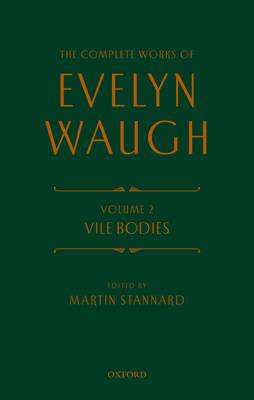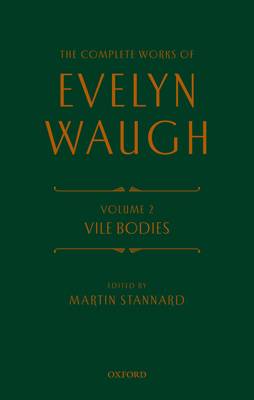
Vous voulez être sûr que vos cadeaux seront sous le sapin de Noël à temps? Nos magasins vous accueillent à bras ouverts. La plupart de nos magasins sont ouverts également les dimanches, vous pouvez vérifier les heures d'ouvertures sur notre site.
- Retrait gratuit dans votre magasin Club
- 7.000.000 titres dans notre catalogue
- Payer en toute sécurité
- Toujours un magasin près de chez vous
Vous voulez être sûr que vos cadeaux seront sous le sapin de Noël à temps? Nos magasins vous accueillent à bras ouverts. La plupart de nos magasins sont ouverts également les dimanches, vous pouvez vérifier les heures d'ouvertures sur notre site.
- Retrait gratuit dans votre magasin Club
- 7.000.0000 titres dans notre catalogue
- Payer en toute sécurité
- Toujours un magasin près de chez vous
Description
The Complete Works of Evelyn Waugh offers the first scholarly edition of Waugh's work, bringing together all of his extant writings and graphic art: novels, biographies, travel writing, short fiction, essays, articles, reportage, reviews, poems, juvenilia, parerga, drawings, and designs. No other edition of a British novelist has been undertaken on this scale. Only 15% of Waugh's letters have previously been published. Alexander Waugh, Evelyn Waugh's grandson, is editing a twelve-volume Personal Writings sequence for the series, intercalating over 10,000 letters with the complete, unexpurgated diaries. All volumes will be beautifully produced, and have comprehensive introductions and detailed annotation. Fiction and non-fiction volumes will also contain a full account of each text's manuscript development and textual variants. The Complete Works will revolutionize Waugh studies, and offer new insights for twentieth-century literary and cultural studies generally. Waughs works are placed in their rich literary and historical context, enabling readers to appreciate for the first time the range and complexity of his thinking and artistic practice, and linking this to the work of his contemporaries in Britain, America and Europe. This volume is part of the Complete Works of Evelyn Waugh critical edition, which brings together all Waugh's published and previously unpublished writings for the first time with comprehensive introductions and annotation, and a full account of each text's manuscript development and textual variants. The edition's General Editor is Alexander Waugh, Evelyn Waugh's grandson and editor of the twelve-volume Personal Writings sequence. This is the first critical edition of Waugh's celebrated novel, a work that is unapologetically modernist in form and tone. The history of Vile Bodies presents an intriguing bibliographical and biographical detective story, not least because Waugh's first wife left him when he was in the middle of writing it. Drawing on previously unpublished correspondence, this edition plots the novel's composition against the cultural backdrop of the 1929 'Flapper's Election', the world of the Bright Young People, and the Wall Street Crash. An introduction and textual analysis explores a range of questions, including: Why were Waugh's corrections to the only extant typescript ignored? What is the evidence to suggest the very point in the autograph manuscript at which Waugh broke off upon learning of his wife's affair? Did he go back over the previous chapter adding darker touches, and, on returning to composition, use the book as a form of public letter to his wife? What readings did the typist invent through mistranscription?
Spécifications
Parties prenantes
- Auteur(s) :
- Editeur:
Contenu
- Nombre de pages :
- 432
- Langue:
- Anglais
- Collection :
Caractéristiques
- EAN:
- 9780199683451
- Date de parution :
- 14-11-17
- Format:
- Livre relié
- Format numérique:
- Genaaid
- Dimensions :
- 140 mm x 218 mm
- Poids :
- 598 g







